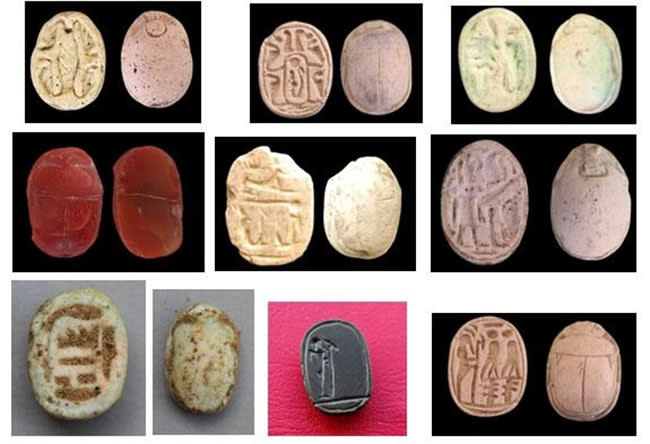A team of archeologists in Egypt uncovered a sword with hieroglyphs showing the name of pharaoh Ramesses II. The weapon was one of the numerous artifacts from the well-supplied Tel Al-Abqain archeological site near the coast of northwest Egypt.
The sword is made of bronze and inscribed with the name of King Ramesses II, who ruled Egypt circa 1279 to 1213 BCE. Ramesses II had the second longest reign in Egyptian history, marked by a major building boom and wars with the Hittites and a group of invaders called the Sea Peoples. The sword was unearthed near an area that could have been infiltrated by enemies. The team also found two inscribed limestone blocks. One of the blocks has a hieroglyphic inscription that mentions Ramesses II and the other has an inscription for an official named “Bay.”
[Related: ‘Screaming woman’ may solve a 3,500-year-old mummy mystery.]
Several religious or spiritual artifacts were also uncovered, including the remains of an intact cow. According to the Egyptian Ministry of Tourism and Antiquities, cows symbolized “strength, abundance, and prosperity, as cows were revered as celestial deities,” in Ancient Egypt. Other cow bones were found near the ovens.
The team also found several scarabs–depictions of a dung beetle that was considered a symbol of the morning sun. One scarab had the inscription “Amun—Lord of the Sky.” Other scarabs bear inscriptions celebrating various deities and flowers. Other jewelry was unearthed, including half of a bronze ring inscribed with “Amun Horakhty,” necklaces, and several semi-precious stones called carnelians shaped like pomegranate seeds.


The objects were discovered among the 3,200-year-old remains of a military barrack that served as a defense against the enemy invasion during the New Kingdom Era. It has several mudbrick architectural structures that housed soldiers, weapons, and the food that they needed to survive.
[Related: Ancient Egyptian scribes suffered bone damage from working long hours in hunched positions.]
According to Mohamed Ismail Khaled, secretary general of the Supreme Council for Archaeology, it was a key military base from 1550 to 1070 BCE on the Western War Road. It was built as a fort to protect Egypt’s northwest border from attacks by Libyan tribes and Sea Peoples. This collection of tribes waged war in the Eastern Mediterranean in the Late Bronze Age.
The Sea Peoples are held responsible for the destruction of the Hittite empire. However, due to a sudden break in record keeping as a result of these invasions, the exact extent and origin of their deeds remains unknown. Some of the principal evidence for the Sea People is based on Egyptian texts and illustrations, which is considered one sided. Other evidence comes from Hittite sources and archaeological data.
Given the very well-supplied nature of the barracks, the soldiers may have been successful in protecting the invasion. However, archeologists are still not certain why the complex was abandoned by the military with so many objects left behind.







